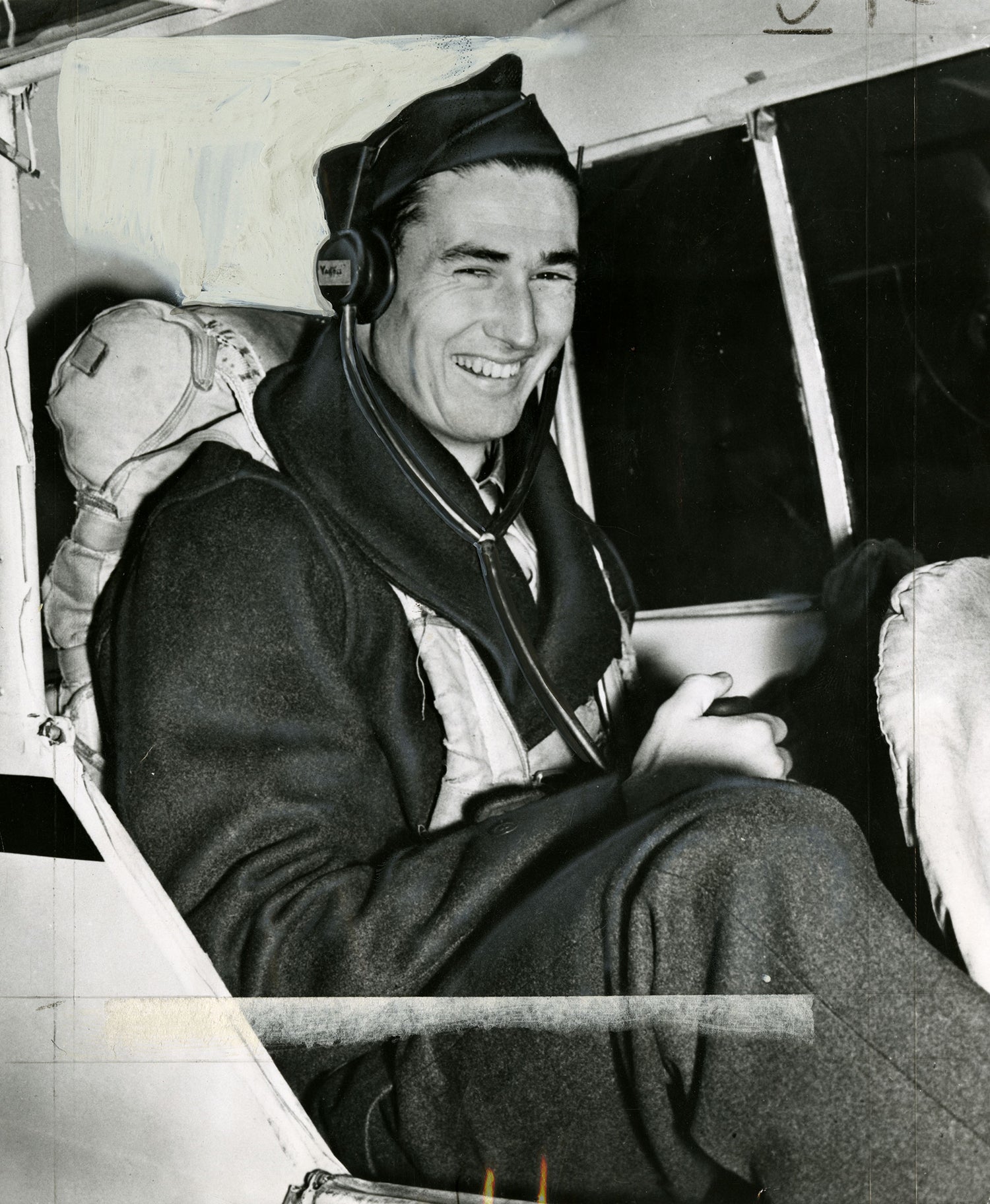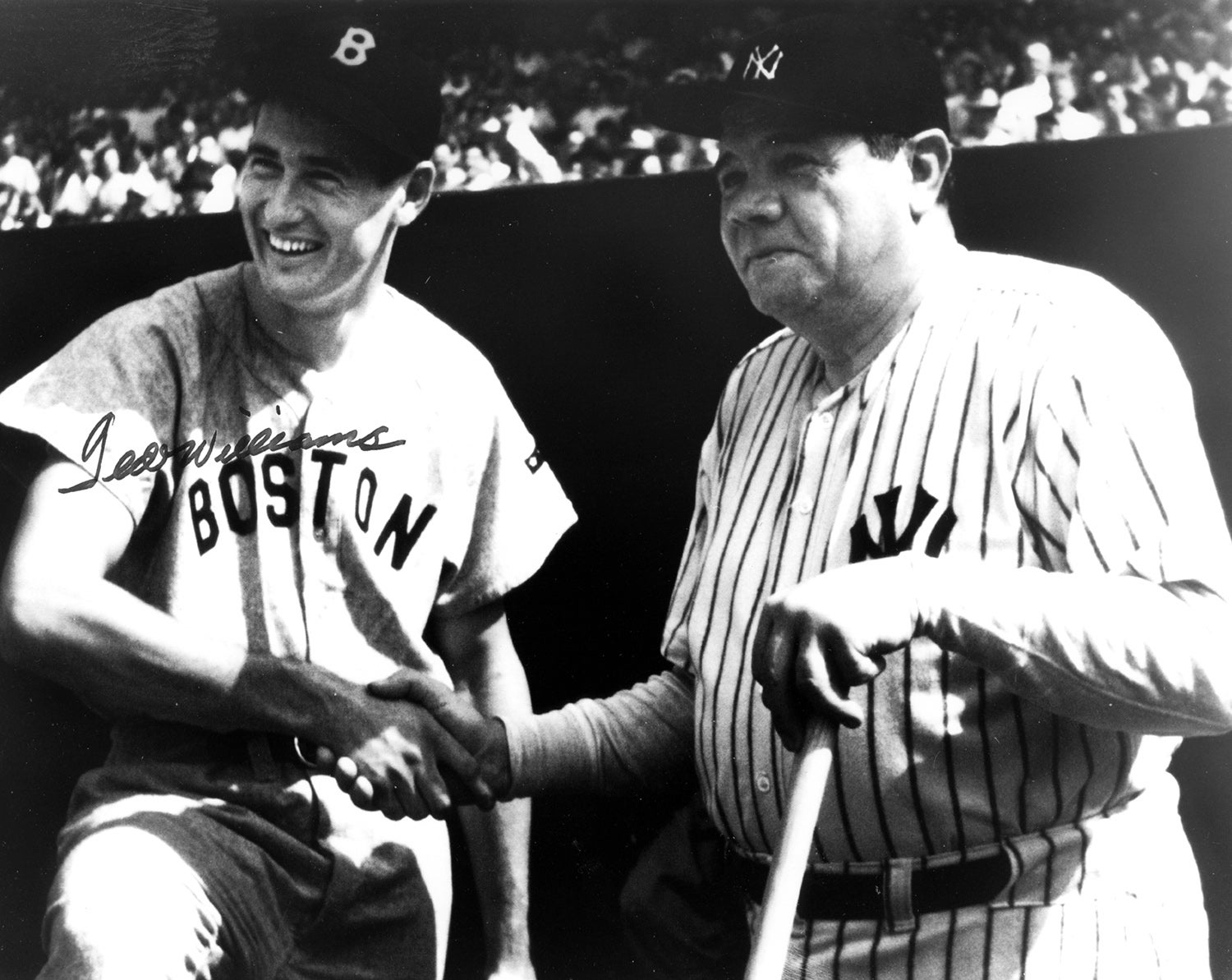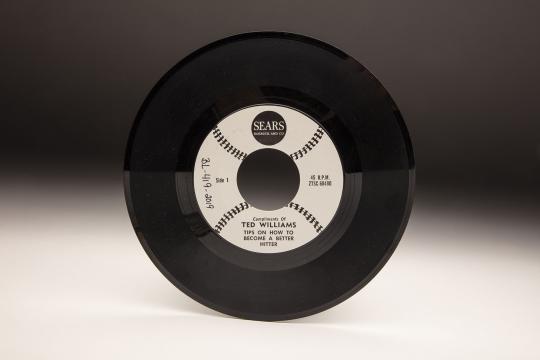- Home
- Our Stories
- Ted Williams’ hitting tips preserved on 45 rpm record at Hall of Fame
Ted Williams’ hitting tips preserved on 45 rpm record at Hall of Fame
Imagine getting hitting tips from one of baseball’s greatest hitters of all-time.
It seems impossible. Or, at the least, prohibitively expensive. But for many baseball fans in the 1960s, it was as simple as placing an order in the Sears, Roebuck catalogue.
Red Sox Gear
Represent the all-time greats and know your purchase plays a part in preserving baseball history.
Shortly after Hall of Famer Ted Williams retired from baseball in 1960, he joined Sears as their sporting goods consultant, helping the department store select and develop its sports equipment. As Sports Illustrated noted in a column from 1962: “If the legendary Williams batting eye can't detect a flaw, Sears knows the item is absolutely first-rate.”
In 1967, as part of a promotion for a new line of “Ted Williams Approved Baseball equipment,” Williams and Sears released a 20-page booklet, titled “Batting Tips from Ted: How to Be a Better Hitter” and corresponding phonograph record, “Tips on How to Become a Better Hitter.” The record is narrated by Williams himself.
This was not, of course, the Hall of Famer’s final foray into writing and hitting instruction. In 1970, Williams first published The Science of Hitting, with Simon & Schuster, which became a seminal text in the baseball world. Among the most notable features in the book is a color image of Williams at the plate, with the strike zone color-coded. This “heat map” demonstrated his likelihood of recording a hit depending on where the pitches were thrown in the zone, and a full-size version of this zone has long been on display on the second floor of the National Baseball Hall of Fame and Museum in Cooperstown.
Recently, thanks to a generous donation from Hall of Fame members Marlin and Brenda Cromley, two copies of Williams’ record and booklet have been preserved at the Hall of Fame.
“It’s one of those classic stories, where we found them in the attic,” Brenda Cromley said. “And we thought maybe the Hall would be interested…We have no idea how family came upon these in the beginning.
“You think of a little kid going with their dad to a Sears store and getting that record and that booklet, or saving up and getting it, and going out in the backyard and trying to put into practice what they heard or read. That’s a really cool thing.”
It’s not surprising that the Cromleys would find baseball artifacts hidden in their attic; the game – and Cooperstown – have had a big influence on their lives.
The couple live in Williamsport, Pa., home of the Little League World Series, and initially met while volunteering for a golf tournament fundraiser with Little League Baseball and the Major League Baseball Players Alumni Association.
Marlin has volunteered as a host for the Little League World Series for 21 years. The hosts, who are referred to as aunts and uncles, act as the “concierges” for the teams, handling the day-to-day logistics so that managers and coaches can concentrate on working with their players. This past year, “Uncle Marlin” hosted the Louisiana team that won the World Series Championship and he and his partner, “Uncle Chuck,” were recently invited to travel down for Mardi Gras and ride on the team’s float.
Later this year, the Cromleys will also attend the wedding of a player Marlin hosted back in 2002.
“You form relationships with these kids,” Marlin said. “And those connections so often stay well beyond the two weeks of [the World Series tournament].”
The capstone of the Cromley’s connection to baseball came in 1999, when Marlin proposed to Brenda in Cooperstown, on a bench outside the Otesaga Hotel, overlooking Lake Otsego.
“We met through baseball and I thought, ‘what better place to propose than Cooperstown?’”
Isabelle Minasian was the digital content specialist at the National Baseball Hall of Fame and Museum
Related Stories

#GoingDeep: Ted Williams Heads Back to War

Ted Williams made big league debut in front of 11 Hall of Famers

Ted Williams goes 6-for-8 in doubleheader to finish season at .406

Ted Williams wins 1946 American League MVP

#GoingDeep: Ted Williams Heads Back to War

Ted Williams made big league debut in front of 11 Hall of Famers

Ted Williams goes 6-for-8 in doubleheader to finish season at .406





